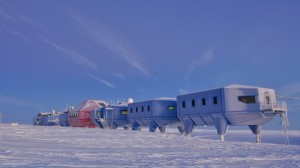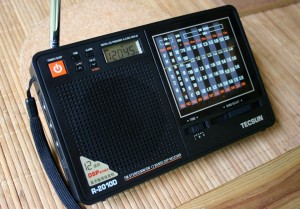
The Tecsun R-2010D (click to enlarge)
SiLabs DSP chips are now in the bulk of the newest portable shortwave radios on the market. And it’s no wonder: these small chips offer more features and improved performance, when properly implemented. Manufacturers love them, of course, because these little chips allow them to produce radios at a much lower cost–some of which they pass on to the consumer–for widening their profit margins.
While there are a few other mechanically-tuned DSP portables on the market–the Degen DE321, DE32, Kchibo KK-9803, to name a few–the Tecsun R-2010D stands apart in that it has a digital frequency display. Tecsun was able to achieve this by building the R-2010D around the SiLabs Si484X chip set. The Degen and Kchibo models actually use the Silicon Labs Si4831/35-B30, which lack a provision for digital display.
Tecsun first announced this receiver three years ago with the model number R-2010. Since then, I have received a lot of questions about this particular radio, so when I first heard that the R-2010D was available for purchase, I ordered one immediately from Anon on eBay.
Unpacking
I received the R-2010D in less than two weeks via airmail from Hong Kong. It was packed in a padded envelope, and while the postal service wasn’t terribly gentle with the package (the R-2010D’s box had damaged corners) the radio inside was perfectly fine.
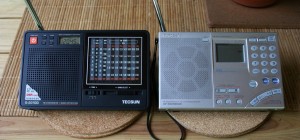
The Tecsun R-2010D compared with my Sony ICF-SW7600GR (click to enlarge)
My first surprise after pulling the R-2010D from its box was the discovery that it was much bigger than I thought it would be. I had assumed it would only be marginally bigger than the Degen models listed above; instead, it’s almost identical in size to my Sony ICF-SW7600GR (one of my largest true portables).
Immediately, without even turning the radio on, I noticed that Tecsun had put more thought behind the R-2010D mechanics and ergonomics than either Degen and Kchibo had in their comparable models.
First of all, the larger size means that the analog display is relatively large. One of the problems with the smaller portables is the difficulty in reliably tuning in a station on a tiny analog dial. With the larger dial, I could tell the R-2010D would be easier to tune accurately.
The telescopic whip antenna is another strong point. Like pricier portables, it is fairly robust, long, and fully rotatable. This is a welcome departure from many portables I’ve seen lately that have puny, fixed-position telescoping antennas. I was even further shocked to notice a dedicated FM & shortwave antenna jack on the left side of the unit. Wow.
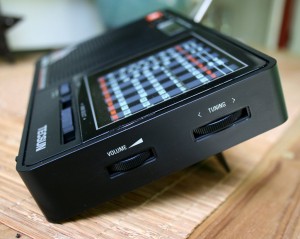
(click to enlarge)
My R-2010D also came with a nice carrying bag and a pair of headphones. While it lacked a set of Ni-MH rechargeable batteries (which can be charged internally), I was pleased with Tecsun’s choice of AA batteries instead of the thin Ni-MH proprietary battery pack the Degen models use. I’m one radio listener that is content having a slightly larger radio in exchange for powering my receiver with standard AA cells. Plus, I have a large collection of Ni-MH AA batteries and a charging station specifically for use in my portables (and you should, too–check out my previous post on the topic).
Performance
I’ve had the R-2010D on the air for a few days, and have formed some initial impressions. I may follow up in the near future with corrections or further observations [spoiler alert: especially since there are serious issues with this model] but I feel pretty confident about my assessment, even with only a few days on the air.
First, let’s talk about the positives…
What a difference a digital display makes
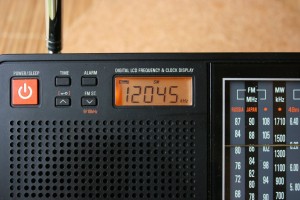
(click to enlarge)
One commonality in all my previous reviews of mechanically-tuned DSP radios is the quirkiness of a precise 5 kHz stepped digital tuner with a vague mechanical analog display as interface. The combination, especially with a little muting between frequencies, makes for a band-scanning chore.
I’m willing to bet that Tecsun realized this weakness and this is the reason they redesigned the radio around the Silicon Labs Si484X (sources tell me when Tecsun first announced the R-2010, they had planned to use the Silicon Labs Si4831 chipset). The Si484X chip allows the R-2010D to offer a precise digital frequency display next to the analog dial. Nice touch; you can accurately confirm your frequency! Secondly, the R-2010D analog dial is large, making the space between tuning steps more broad and therefore easier to find.
In fact, the Tecsun excels in the tuning category. While there is some noticeable muting between frequency changes, it’s not as distracting as other models listed above. Additionally, the tuning wheel itself is silky-smooth to operate, much like higher-quality Sony and Grundig analog portables of the past. There is no lag time or “play” in my R-2010D’s dial. Another nice touch: the tuning needle is thin, making it much easier to precisely place the needle on your target frequency (you can then fine-tune with the digital display).
Audio
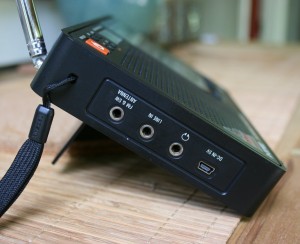
(click to enlarge)
Another strong point, of course, is audio fidelity. Being a larger portable means that the R-2010D has a larger front-facing speaker. Audio from the internal speaker is actually better than my Sony ICF-SW7600GR offers.
Even better, the R-2010D has a three position tone control switch (low, medium, high). I find that for AM listening, the low position seems to strike the right balance, especially during summer conditions when high-pitched static crashes and pops are ever-present. On the FM band, I find that I keep the tone control set to medium. The high position is rather high and I find that I personally don’t use this tone position.
FM performance
While still on the topic of clear positives, I can say that the FM performance of the R-2010D is above average. It can easily receive my benchmark distant NPR station with little static or fading. I can also hear all of my local FM stations with ease. Any distortion or noise seems to be very low on the FM band.
Shortwave performance
I’ve spent the bulk of my R-2010D listening time on the shortwave bands. The following are my observations:
Sensitivity: great
In terms of sensitivity, the R-2010D is great; very acceptable for a radio in the $40 US price group. I can hear stations with it that I cannot hear on my other mechanically-tuned DSP radios and, indeed, it seems to have sensitivity on par with my Tecsun PL-380. The PL-380 has a slight edge on the R-2010D, but only noticeable with the weakest stations. In fact, what probably gives the PL-380 an edge is its automatic gain control, which does a much better job of handling weak signal stations than that of the R-2010D. The R-2010D is not, however, as sensitive as my Sony ICF-SW7600GR (a radio three times the cost of the R-2010D).
Selectivity: unfortunately, terrible
In my opinion, the biggest failing of the Tecsun R-2010D is its very poor selectivity.
The second time I turned the R-2010D on, I tuned it to the morning broadcast of Radio Australia on 9,580 kHz. If you’re a regular here at the SWLing Post, you’ve probably heard one of the many recordings I’ve made of RA on 9,580; it has a blowtorch signal into eastern North America.
Here’s what happened: I tuned the R-2010D to 9,580 kHz, only to hear China Radio International (CRI)–with beautiful fidelity, I might add. At first, I thought that perhaps the Radio Australia signal had gone off the air. I checked my WinRadio Excalibur SDR, however, and saw that the Radio Australia signal was one of the strongest in my 30 MHz bandwidth display. It was being broadcast with its usual strength out of Shepparton. CRI, though, had a blowtorch signal as well on 9,700 kHz; only 10 kHz away. The CRI broadcast might have been ever so slightly stronger than the RA signal.
For some reason, the R-2010D could only detect the CRI signal; there was not even a trace of Radio Australia. I began to wonder if the R-2010D had poor alignment, so I tuned to other stations on the air, but found they were basically showing as broadcasting on frequency; alignment wasn’t the issue.
I grabbed a few other radios that were handy for comparison, and made quick recordings. Here is what I heard:
The Degen DE32 was being battered by the CRI signal, but I could still hear Radio Australia:
The Degen DE321 had better reception than the DE32:
The Sony ICF-SW7600GR could detect the Radio Australia signal with little problem (and without the antenna fully extended):
The Tecsun R-2010D, while tuned on 9,580, could only detect 9,570 kHz:
The Tecsun PL-380 (no recording) could hear RA almost as well as the Sony.
Upon further listening, I believe the selectivity may be poor in general, but it’s made worse by the fact that the only bandwidth setting is (obviously) rather wide. I came to this conclusion tuning through bands and locating another CRI blow-torch signal on 13,740 kHz. I could get a full tuning lock (indicated on the digital display) anywhere from 13,735 to 13,745 kHz. I could hear CRI, though, anywhere from 13,725 to 13, 755 kHz; a full 25 kHz spread! This explains why the R-2010D could not discern between two strong signals spaced only 10 kHz from each other.
This complete lack of selectivity means that I simply cannot recommend the R-2010D for purchase. It’s most unfortunate, as Tecsun is known for quality products and the best DSP-based shortwave radios.
For what it’s worth, I am going to forward this review to both the eBay seller and a contact at Tecsun. I feel like if the default bandwidth were narrowed even somewhat, it could help the R-2010D cope with adjacent signals much better. This could be a simple firmware adjustment, or worse case, a flaw in the receiver design.
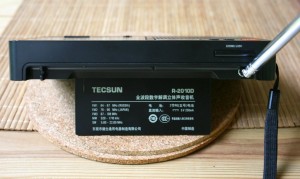
(click to enlarge)
Medium Wave
I find medium wave (AM broadcast band to us here in North America) to be mediocre; very similar to my experience with the Degen DE32 and DE321. I had no luck with weak MW stations at night. Probably a combination of poor selectivity and an over-active AGC circuit created a bumpy, wishy-washy experience on the air. While I could hear booming clear channel stations at night, the receiver had a hard time coping with adjacent signals–even strong stations sounded periodically garbled. During the daytime, however, I could easily receive my few local AM stations.
Unfortunately, I cannot recommend the R-2010D for medium wave radio enthusiasts.
Summary
Below, I’ve tabulated the pros and cons from the moment I took the DR-2010D out of the box. Note that this list takes into account the $38 price level of this radio:
Pros:
- Smooth tuning mechanism
- Adequately sized analog dial
- Sturdy construction
- Good audio from internal speaker
- Tone controls
- FM sensitivity good
- Simple: you might only need to reference the owner’s manual to set alarm/clock features
- Nice, wide flip-out back stand
- Line-in ability
- Antenna jack
Cons:
- Very poor selectivity on shortwave and on mediumwave
- AGC circuit struggles with weak AM stations
- Poor MW sensitivity
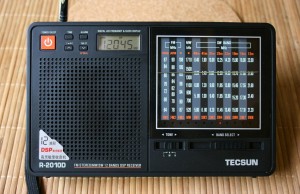
(click to enlarge)
Conclusion
When I first pulled the R-2010D out of its box, I was most impressed. Tecsun had obviously thought through the mechanical engineering of this radio: smooth tuning mechanism, large accurate analog dial, small digital readout, beefy telescopic antenna, nice back stand, and overall quality “feel.” And audio, via the internal speaker, is brilliant: robust and room-filling.
What Tecsun engineers put into the mechanical engineering, they left out of the receiver design. When you tune the R-2010D to a strong, isolated shortwave signal, it sounds great.
However, the lack of selectivity is simply crippling on the shortwave and medium wave bands.
Note that this review is only based on the particular Tecsun R-2010D I received (ser# 41420130600006). Should I test another–just in case this is limited to my particular unit, which I regret is highly unlikely–I will instantly update this review. Tecsun, in my opinion, is a good company, so I trust they will take some notice. Until then, I would wait to purchase the Tecsun R-2010D.
I will also update this page with any response I receive from Tecsun. Meanwhile, if you purchased a Tecsun R-2010D as well, please share your thoughts in the comments section.
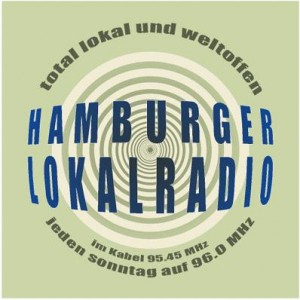 I just received word that the independent Jazz and International Music broadcaster, Hamburger Lokalradio, will broadcast a series of shortwave tests transmissions this Sunday (June 30, 2013).
I just received word that the independent Jazz and International Music broadcaster, Hamburger Lokalradio, will broadcast a series of shortwave tests transmissions this Sunday (June 30, 2013).

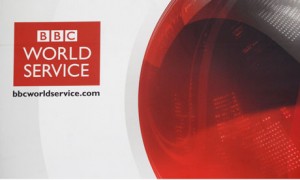 Richard Cuff shares this information regarding the BBC World Service:
Richard Cuff shares this information regarding the BBC World Service:







